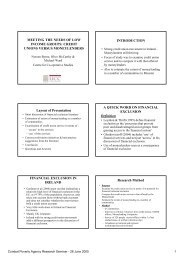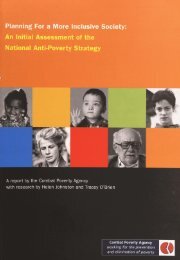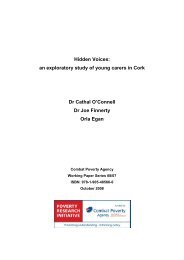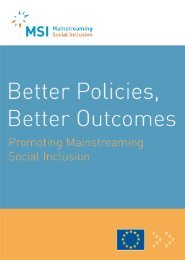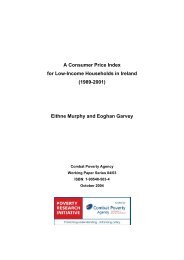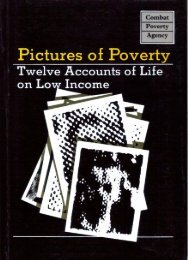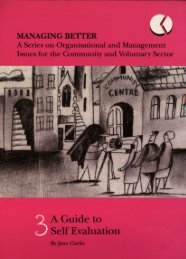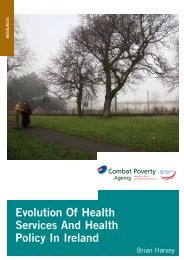The Distribution of Income in Ireland (2000) - Combat Poverty Agency
The Distribution of Income in Ireland (2000) - Combat Poverty Agency
The Distribution of Income in Ireland (2000) - Combat Poverty Agency
- No tags were found...
You also want an ePaper? Increase the reach of your titles
YUMPU automatically turns print PDFs into web optimized ePapers that Google loves.
76<strong>The</strong> <strong>Distribution</strong> <strong>of</strong> <strong>Income</strong> <strong>in</strong> <strong>Ireland</strong><strong>The</strong> <strong>Distribution</strong> <strong>of</strong> Earn<strong>in</strong>gs 77able <strong>in</strong>crease <strong>in</strong> dispersion with<strong>in</strong> that education category between1987 and 1994.It is also <strong>in</strong>structive to look with<strong>in</strong> particular age ranges. Focus<strong>in</strong>gon employees aged 25-39, once aga<strong>in</strong> there was a substantialshift <strong>in</strong> educational pr<strong>of</strong>ile between 1987 and 1994. <strong>The</strong>percentage with only primary-level qualifications fell from 23per cent to only 9 per cent for this sub-set, and the percentagewith a university degree rose to 16 per cent. <strong>The</strong> higher levels<strong>of</strong> educational atta<strong>in</strong>ment aga<strong>in</strong> show a relatively rapid rate <strong>of</strong><strong>in</strong>crease <strong>in</strong> median earn<strong>in</strong>gs. <strong>The</strong> overall dispersion <strong>in</strong> hourlyearn<strong>in</strong>gs has risen for this age range though more modestlyUian for all employees, with the ratio <strong>of</strong> the top to the bottomdecile go<strong>in</strong>g from 3.1 to 3.3. Dispersion has <strong>in</strong>creased with<strong>in</strong>most education groups, with the largest <strong>in</strong>crease aga<strong>in</strong> forthose with university degrees.Such analyses <strong>of</strong> trends <strong>in</strong> earn<strong>in</strong>gs <strong>of</strong> employees crossciassifiedby sex, age and education category are useful, but*e <strong>in</strong>fluence <strong>of</strong> different factors, notably returns to education,can be distmguished more easily us<strong>in</strong>g estimated earn<strong>in</strong>gsequations. <strong>The</strong> extent to which wage premia for different education^qualifications changed over the period has been <strong>in</strong>notH;d - USm ? that a roach <strong>in</strong>PP Barrett, Callan and Nolan(1999). Us<strong>in</strong>g the 1987 and 1994 datasets, standard humana m^h9e < B T ti0nS 'baSSd ° n edu




